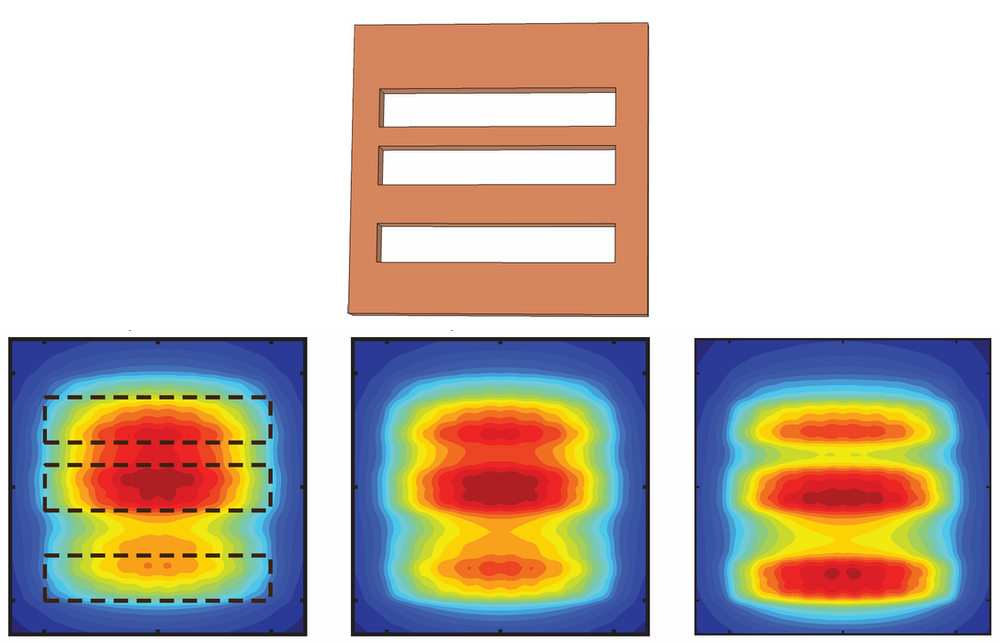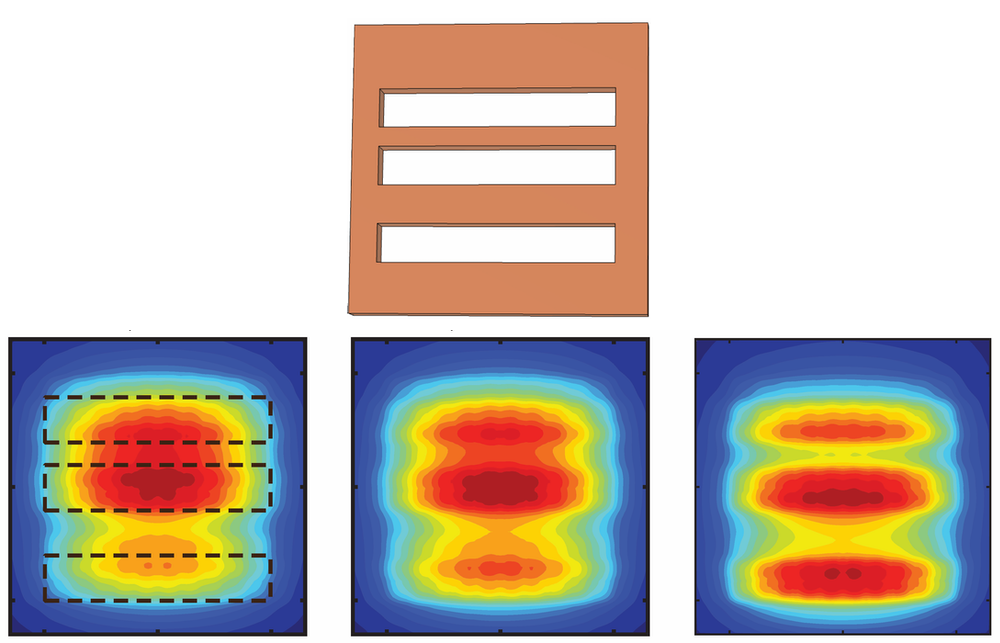Nonsteady Illumination Improves Imaging Resolution
Images formed using a conventional lens have a strict resolution limit—features smaller than about one half of a wavelength of light are lost. “Superlenses” made from structures called metamaterials could potentially beat this restriction if not for unavoidable losses in the transmission of the light carrying the finest details. Now researchers have used sound waves to demonstrate a new way around this problem that should also apply to light waves: they varied the amplitude of the “illuminating” waves over time [1]. The new approach, they believe, will enable the development of more precise acoustic and photonic lenses for use in areas such as microscopy and ultrasound imaging.
Not all of the light that reflects off of an object escapes to distances far away. The so-called evanescent waves decay rapidly in amplitude as they travel away from an object, but these waves contain the subwavelength information required to beat the usual resolution limit. A technique called near-field scanning optical microscopy can detect these waves by using a probe to scan across the object at close range, but real-time images are not possible because the scanning process is time consuming. Other “superresolution” imaging techniques also face trade-offs between complexity, speed, and efficiency.
Researchers have known for two decades that a superresolution lens (superlens) could be made with a metamaterial—a patterned array of smaller structures—which could be placed close up and could amplify the evanescent waves. But as photonics physicist Andrea Alù of the City University of New York points out, superresolution lenses haven’t yet worked very well because evanescent waves can be easily absorbed by a superlens or be distorted by imperfections in the metamaterial.
Alù and his colleagues have now shown how to avoid this problem by using an illumination intensity that decays with time. “We were at first confused by this effect,” says Alù. They first encountered it in theoretical work on metamaterial lenses, and, as he admits, the idea of using a decaying signal to improve imaging resolution “is rather counterintuitive.”
But the idea, he says, flows naturally from a mathematical analysis. A metamaterial superlens supports a resonance that can amplify evanescent waves of the right frequency, like a sort of echo chamber. The unavoidable absorption of wave energy in materials, however, makes the resonance frequency complex, which means that the resonant waves not only oscillate but also decay in amplitude. Hence, input signals decaying at the appropriate rate can be amplified, just as any resonant system can amplify an input wave of the correct frequency. This amplification compensates for the natural decay caused by material absorption, as Alù and colleagues proved in earlier theoretical work [2].
To demonstrate the effect in a real device, the researchers used sound waves, for which a superlens structure is physically larger and easier to construct than one made for light. They started with a standard acoustic superlens design—a 10-cm-thick slab of plastic with an array of holes passing through it, perpendicular to the flow of sound. The holes change the way sound travels through the structure, enabling the evanescent waves to be transmitted. When tested with conventional input signals, however, absorption of the sound energy inside the superlens prevents this lens from going beyond the standard resolution limit.
Alù and colleagues aimed sound waves of 1715 Hz at a plate containing the “object” to be imaged—three parallel slots, 0.4 cm wide, which was well below the wavelength of 20 cm. Close behind the plate was the metamaterial lens, behind which was a detector that could produce an acoustic image of the slots. For incident waves of constant amplitude, the lens failed to resolve the stripes. But as the researchers tested input signals with amplitudes decaying at different rates—using pulses instead of continuous input signals—the resolution improved. They found that decaying pulses of about 5 ms provided the optimal image resolution, which was roughly 6 times sharper than for a constant amplitude input.
“This is an elegant way to compensate for the losses in metamaterials,” says metamaterials specialist Nader Engheta of the University of Pennsylvania. “Professor Alù and his group have shown, both theoretically and experimentally, how their technique can lead to superresolution. This method should open doors to a variety of new possible metamaterial applications.”
–Mark Buchanan
Mark Buchanan is a freelance science writer who splits his time between Abergavenny, UK, and Notre Dame de Courson, France.
References
- S. Kim et al., “Loss compensation and superresolution in metamaterials with excitations at complex frequencies,” Phys. Rev. X 13, 041024 (2023).
- D. G. Baranov et al., “Coherent virtual absorption based on complex zero excitation for ideal light capturing,” Optica 4, 1457 (2017).







